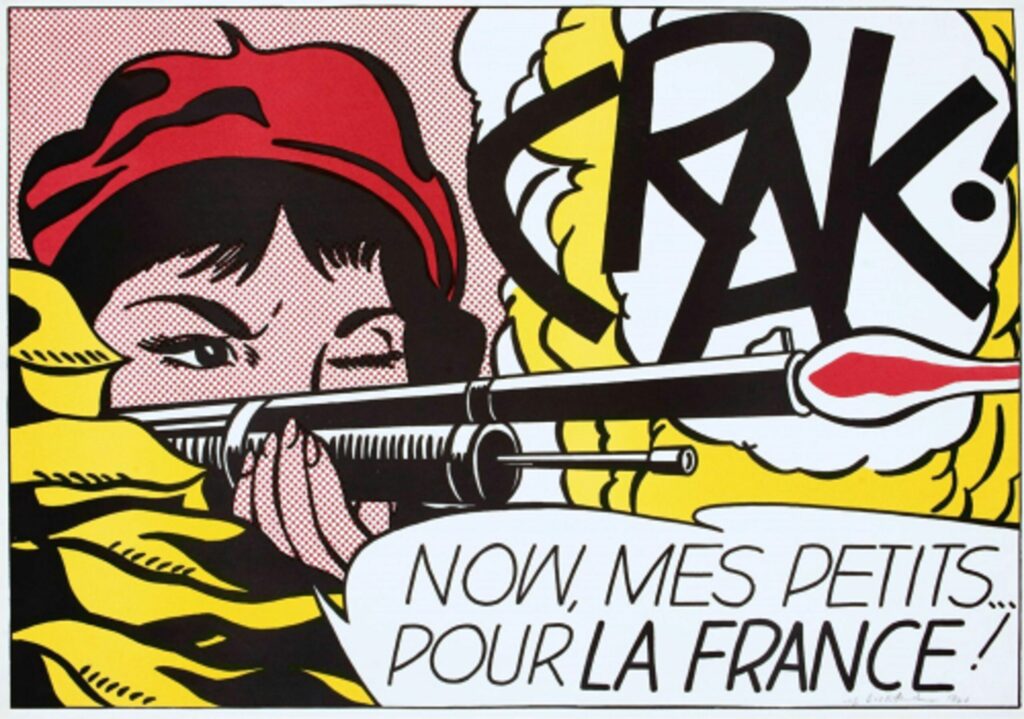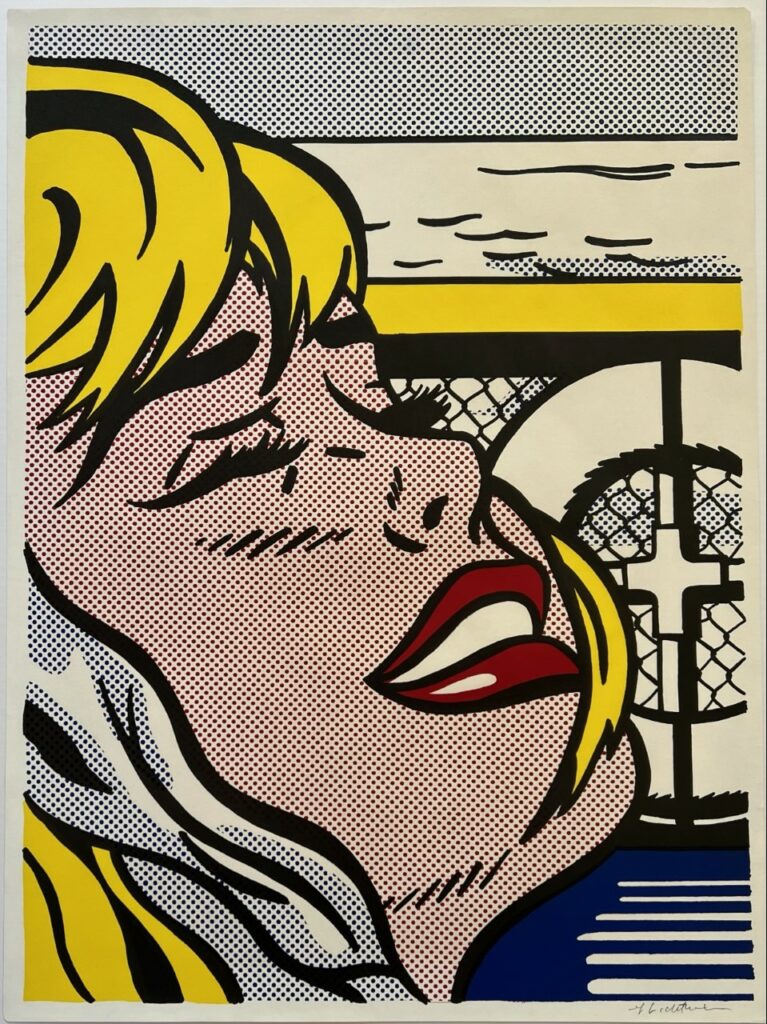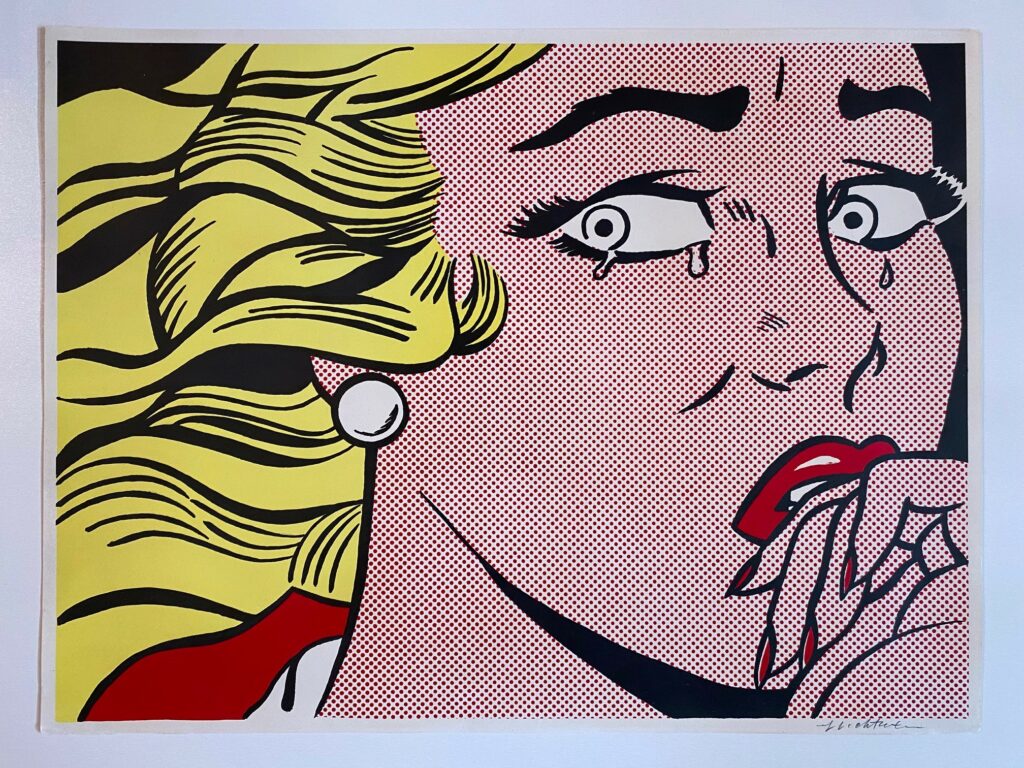Roy Lichtenstein Pop Art
Roy Lichtenstein Pop Art is instantly recognisable. His use of comic book graphics as a starting point for creating massive works using the Ben-Day dot technique came to be recognised as his style. He experimented with art in a variety of media during his career, including painting, sculpture, and even film. Roy Lichtenstein remains one of the most significant figures in the American Pop Art movement.
Years after graduating from Ohio State, Lichtenstein held his first solo exhibition in New York City in 1951. His artistic style at the time oscillated between expressionism and cubism. He spent six years in Cleveland, Ohio, before returning to New York in 1957 and briefly dabbling with abstract expressionism.

In 1960, Lichtenstein accepted a position as a professor at Rutgers University. Alan Kaprow, a pioneer of performance art and one of his colleagues, gained fresh prominence. Roy Lichtenstein created his first pop paintings in 1961. In order to make the painting Look Mickey, which features the cartoon characters Mickey Mouse and Donald Duck, he used Ben-Day dots to print in the comic book manner. He reportedly did so in response to a challenge from one of his sons who quipped, “I bet you can’t paint as good as that, eh, Dad?” while pointing to Mickey Mouse in a comic book.
The Castelli Gallery in New York City hosted a solo exhibition of Lichtenstein’s work in 1962. Before the exhibition had started, powerful collectors bought all of his works. In 1964, as his renown grew, Lichtenstein left his teaching position at Rutgers to focus solely on his art.
Two of Roy Lichtenstein’s most well-known works from his whole career were produced in 1963 and were both adaptations of DC comic books: Drowning Girl and Whaam! His strategy for transforming already-existing comic art into works of pop art is best demonstrated by Drowning Girl. In order to make a fresh, dramatic message, he cropped the original artwork and used a shortened, more direct version of the comic’s original text. The piece has a totally different impact than the original comic book panel because of the enormous size increase.

Like Andy Warhol, Lichtenstein’s works raised issues regarding the definition and nature of art. While some praised Lichtenstein for the audacity of his creations, others harshly attacked him for creating little more than reproductions of other works. Is He the Worst Artist in the U.S.? was the subject of an article published in Life magazine in 1964. His work’s comparatively low level of emotional involvement was viewed as a smack in the face to abstract expressionism’s concept of baring one’s soul.
In 1965, Lichtenstein stopped using comic book pictures as his main inspiration. The fact that royalties were never given to the creators of the original pictures used in Lichtenstein’s massive works still bothers some critics.
Roy Lichtenstein also produced cartoon-like paintings in the 1960s using Ben-Day dots that interpreted well-known works by artists including Cezanne, Mondrian, and Picasso. He produced a number of paintings in the second half of the decade that featured comic-book-style depictions of brushstrokes. The pieces were created as a parody of abstract expressionism’s emphasis on gestural painting by taking the most basic form of traditional painting and turning it into a pop art object.

One of the key figures in the Pop Art movement was Roy Lichtenstein. His strategy of elevating what he considered to be “dumb” cultural objects by transforming common comic strip panels into colossal works was his way of doing it. He called pop art “industrial painting,” which highlights the term’s origins in the mass production of generic pictures.
Roy Lichtenstein’s artwork keeps getting more expensive. The cartoon bubble in Lichtenstein’s 1962 work Masterpiece, which sold for $165 million in 2017, is thought to be a sarcastic premonition of his fame: “My, soon you will have all of New York screaming for your work.”
